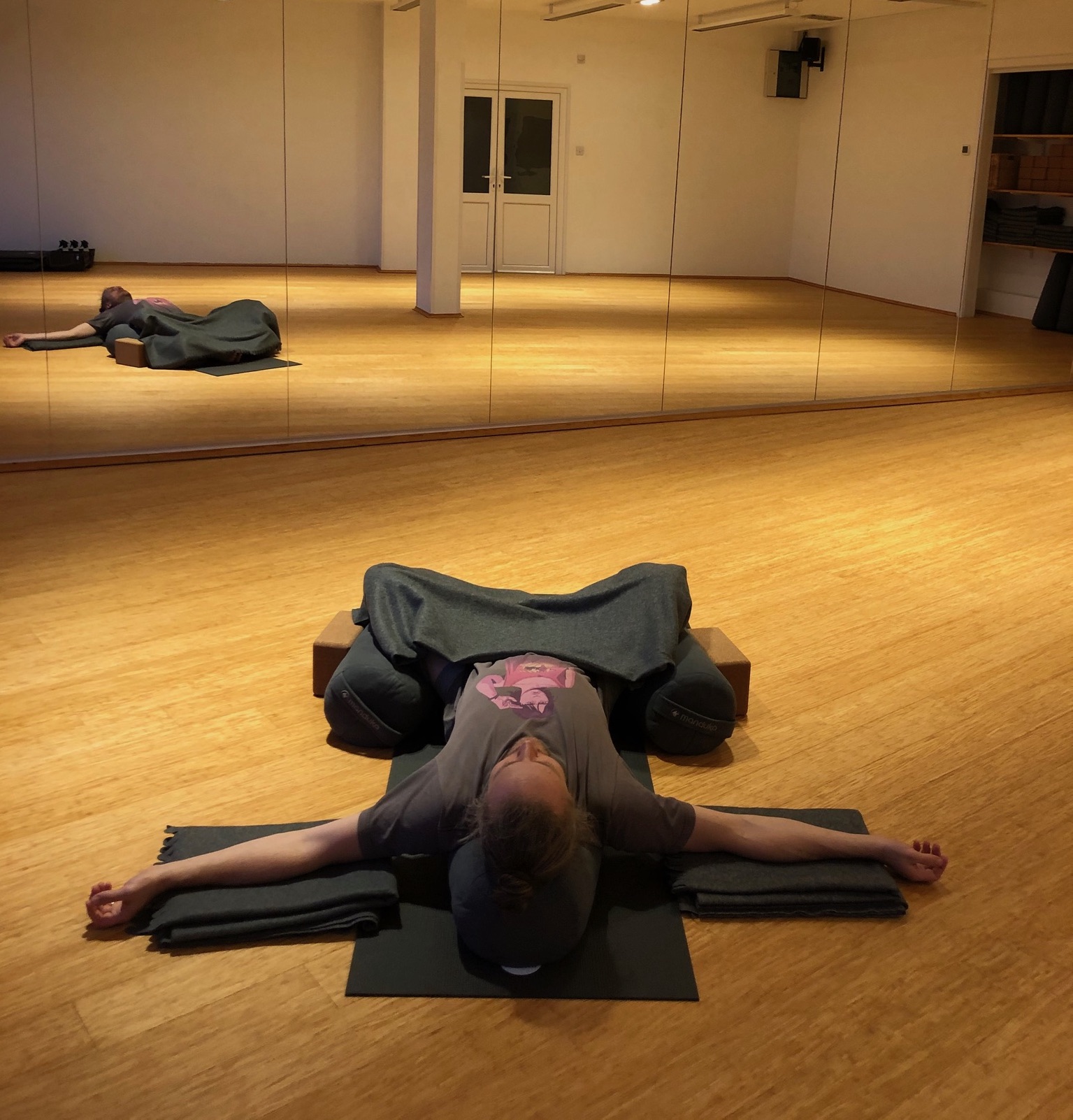Vinyasa is a playful and challenging way to practise Yoga. Using props in your Vinyasa Yoga practice can help you find balance and alignment. By breaking down basic poses using props you can reeducate yourself to awaken your body’s inner intelligence. This intelligence is developed as you observe where the prop touches you and where it doesn’t so that the pose teaches you something new. In this sense, even the floor can be considered a prop when used in this way. Yoga poses performed using the floor for support help you to use your intelligence to penetrate the places where you have no awareness. Iyengar said that while you are in a pose you must study the pose, not merely stay in it. But as well as studying the pose, you must also study yourself.
Restorative Yoga is a wonderful practice that uses a range of props to support the body to come into a state of relaxation. Initially, the intelligent use of props can help to stimulate the parasympathetic nervous system. The positions that you’re placed in allow you to find deep rest, softening all the muscles and tissues of the body, releasing tension and stress and helping the body to digest and metabolize. Once you become accustomed to Restorative Yoga, a bolster will become your go-to prop every time you come into Savasana.
I first came to Yoga through the Iyengar method. Discovering all the different positions I could put my body in was magical. It inspired me to purchase some blocks, blankets, bolsters and a strap so I could practise at home. I developed my own practice using props to support the most important areas of my body and experience the effects of stretching the body whilst being supported. I was amazed by the depth of support and stretch that the props allowed and the sense of ease and trust that was created. The wall was also one of my main props during this period of my practice. The use of props allowed for more alignment in my postures, but the practice lacked fluid movement and transition between postures. Much like relying on a manual therapist to ease out all the knots and strains in the body without doing any sensible movement practices, after a while I felt I had become too reliant on my prop-heavy practice and needed to develop my own sense of being supported.
Through more mindful prop usage, I became able to cultivate a sense of presence in my body that transcended the boundaries of the heavy dependence on props that I had fallen into. Ultimately, props should serve as a catalyst for enhancing flexibility and strength, enabling Yogis to explore poses beyond their perceived limitations, not to be the limiting factor. By using props intelligently in your practice, you can really allow yourself time in each pose to adapt and explore the benefits at your own pace without becoming reliant on them. Where movement meets mindfulness, the integration of Yoga props into your practice can be a profound method of deepening your experience on the mat. Everyone can benefit from a practice that assists you to trust your own body whilst knowing that you can also opt for additional support when you need it, don’t you think?
The specific benefits of using props depends on the type of practice you are doing but some of those benefits are –
- Improved flexibility with refined alignment and form
- Helping you to stop overreaching in poses
- Going deeper into an asana without compromising your form
- Relieved stress, tension and joint pain
- A deep soothing effect on the mind and nervous system
- Improved circulation and reduced inflammation
- Helping you to stay longer in a pose to get maximum benefit
- Preventing bad posture through subtle adjustment
- Additional relaxation in restorative poses
About Lucy: I am the co-founder of Yoga One Bournemouth and I love to develop my Yoga practice with new ways to sequence and explore traditional Yoga poses. I believe the new awareness, strength and flexibility created through Yoga supports further opening to our potential – in all areas.
